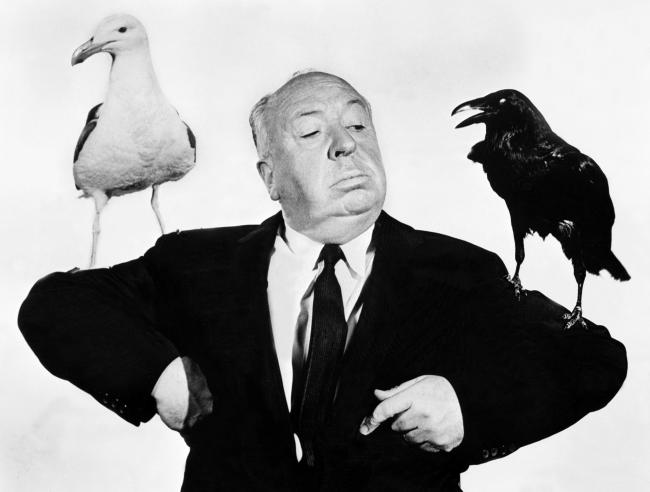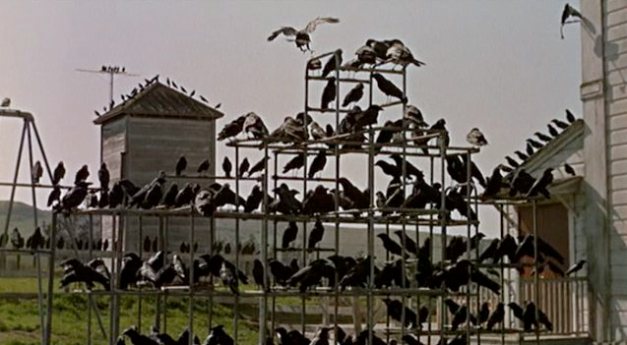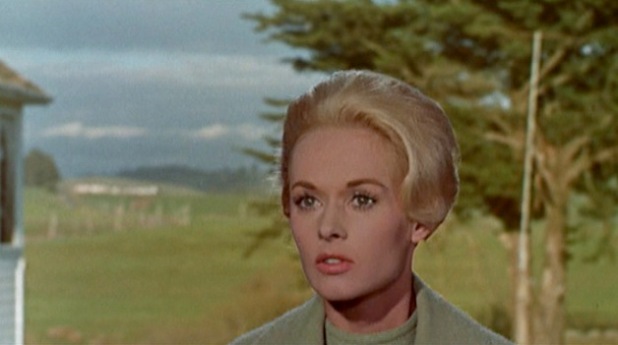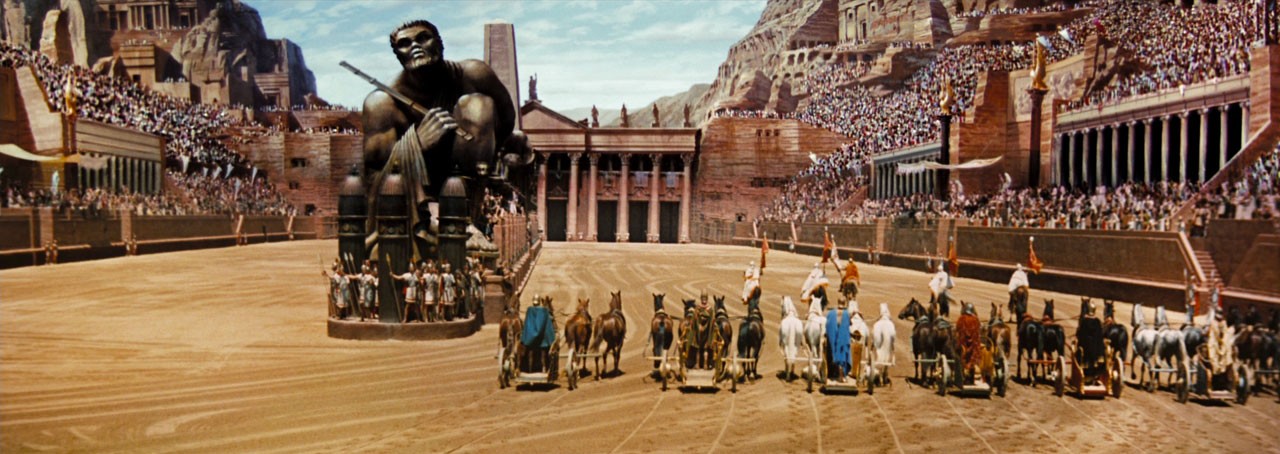March Shame: So The Birds has a beginning, a middle and “an end”
(originally posted at wordpress.cinemashame.com)
The year: 1990. My age: 12. The movie: Psycho. This was the year I watched my first Alfred Hitchcock movie, or at least the first one I remember. Pardon me if I don’t stop to fully explain the greater ramifications of showing a 12-year old Psycho. Sure, it was all that, but it was also… more.
It was about this time that I first became what one might call a pre-teen video store junkie. By the way, PRE-TEEN VIDEO STORE JUNKIE is my Ennio Morricone tribute band (obligatory hat tip to @ThatAndyRoss every time I freeload on his #Bond_age_ meme). In short order, I watched Rear Window, North by Northwest, Notorious and Dial M for Murder. I worked my way through the available VHS tapes, whatever my parents had in the library. Undergraduate film school brought about a lot of clips during class, but I don’t specifically recall watching a whole Hitchcock film. The Hitchcock class was a rotating offering that rotated right out of my time in the program. I found myself in “The Politics of Oliver Stone and Steven Spielberg” instead. This class offered me the opportunity to form drastic opinions about The Color Purple and Born on the 4th of July and for that I will always be grateful. But I’d have much rather tackled the deep cuts from Hitch, most of which I eventually got around to on my own time after the release of the first Hitchcock DVD Box sets.
But the one movie I never sat down to watch was The Birds. I’d studied the isolated “jungle gym” scene on its own during my Intro to Film class. I’d seen dozens of clips in montages, retrospectives, etc, etc. I’d felt like I’d seen it a dozen times over. But I hadn’t. And then when I created this CinemaShame list I still didn’t think to include it. Two months into my list, I realized I’d forgotten probably my most egregious oversight. So I dropped Ride the High Country and replaced it with The Birds.
After numerous false starts I finally set a hard date with Hitch during the #Cine3Some (the simul-live-tweet of three different films at the same time) where @AnnaRenee would finally finish Gone With the Wind and @theactualkeith would show up late and then fall asleep during Citizen Kane. Shame!
The first act of The Birds is not, well, especially great. It meanders in and out of a bizarre crush turned practical joke about lovebirds. The basis for suspense is being built, brick by brick. Chickens won’t eat. Birds gathering on a wire. Questions about bird migration. Every mention or shot of birds is heightened to a preposterous level of perceived significance.
And then Tippi Hedren gets clubbed by a seagull. Act two. Hitch stops messing around… and then before you know it, you’ve reached the scene. THE scene.
Out of context, the “jungle gym” scene is a study in conducting escalating tension. In the context of the entire film, however, the “jungle gym” scene pays off dozens of smaller moments, all leading up to this one sequence. Melanie Daniels (Tippi) sits, enjoying a quiet cigarette on a bench. Minding her own business. In the background, children sing a Scottish folk song (“The Wee Cooper O’Fife”) in the schoolhouse. The crows gather. From here on out, Hitch unleashes sequence after sequence of birds gone bad. No explanation. No attempt to point fingers or give them some excuse for the bloodletting. Some might posit that this film is an environmental fable. Poppycock. The birds are attacking because the birds are attacking. Throughout the film characters want to blame Melanie Daniels because of the timing of her arrival at Bodega Bay. A woman confronts her. Accusing her of “EEEEVIL.” As the hysteria mounts and the fingers point, it becomes increasingly more clear to the viewer that there’s no solution, no possible deus ex machina that will save these characters from the birds.
And that brings us to the ending.
I’d heard plenty about the ending. Angst. Derision. Worship. It was time to see for myself.
Here’s my tweet immediately following the conclusion of The Birds:
Wait. That’s the end of the movie? #TheBirds #Cine3Some
— #Bond_age_ (@007hertzrumble) April 25, 2014
And even as I launched into the second of my Thursday night CinemaShame features, Godzilla, I still didn’t know what to make of that ending. It was the absence of a resolution.
This morning I had a revelation. Well, not so much a revelation as an understanding, a reading that satisfies everything I wanted or needed from the ending to this film. I rewatched the ending tonight to further flesh out my hypothesis.
As viewers we’ve come to know these characters, even fear for their well being. We hope that they escape. This is the tension in the film. As they’re loading up the station wagon to make a valiant ride to the hospital to mend Melanie’s wounds, we expect the birds to attack. When they don’t and when there’s no added tension we don’t know how to react. Yay? Our characters are safe? Happy ending?
(originally posted at wordpress.cinemashame.com)
Nah. Not exactly. (Spoiler-ish things to follow, but nothing below would lessen your enjoyment of the film have you not seen it.)
As the wagon drives off into the “safe” horizon, the camera remains at the house, at Bodega Bay, surrounded by the idle crows and seagulls. If we return to the notion that there’s no reason for the attacks, no ecological message, no provocative “EEEVIL” inspiring supernatural swarms of killer birds, we have no reason to believe that Melanie and Mitch will arrive at the hospital safely… unless the birds have already achieved some measure of victory. With the camera remaining with the birds rather than the humans, the point of view has shifted. The birds, as the title of the film suggests, have been our main characters all along and now as we and the birds watch the purged humans flee Bodega Bay, this is our happy ending.
The birds have won.
Note the ray of sunshine.









